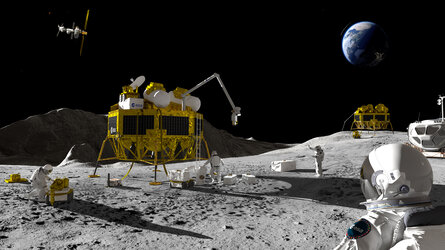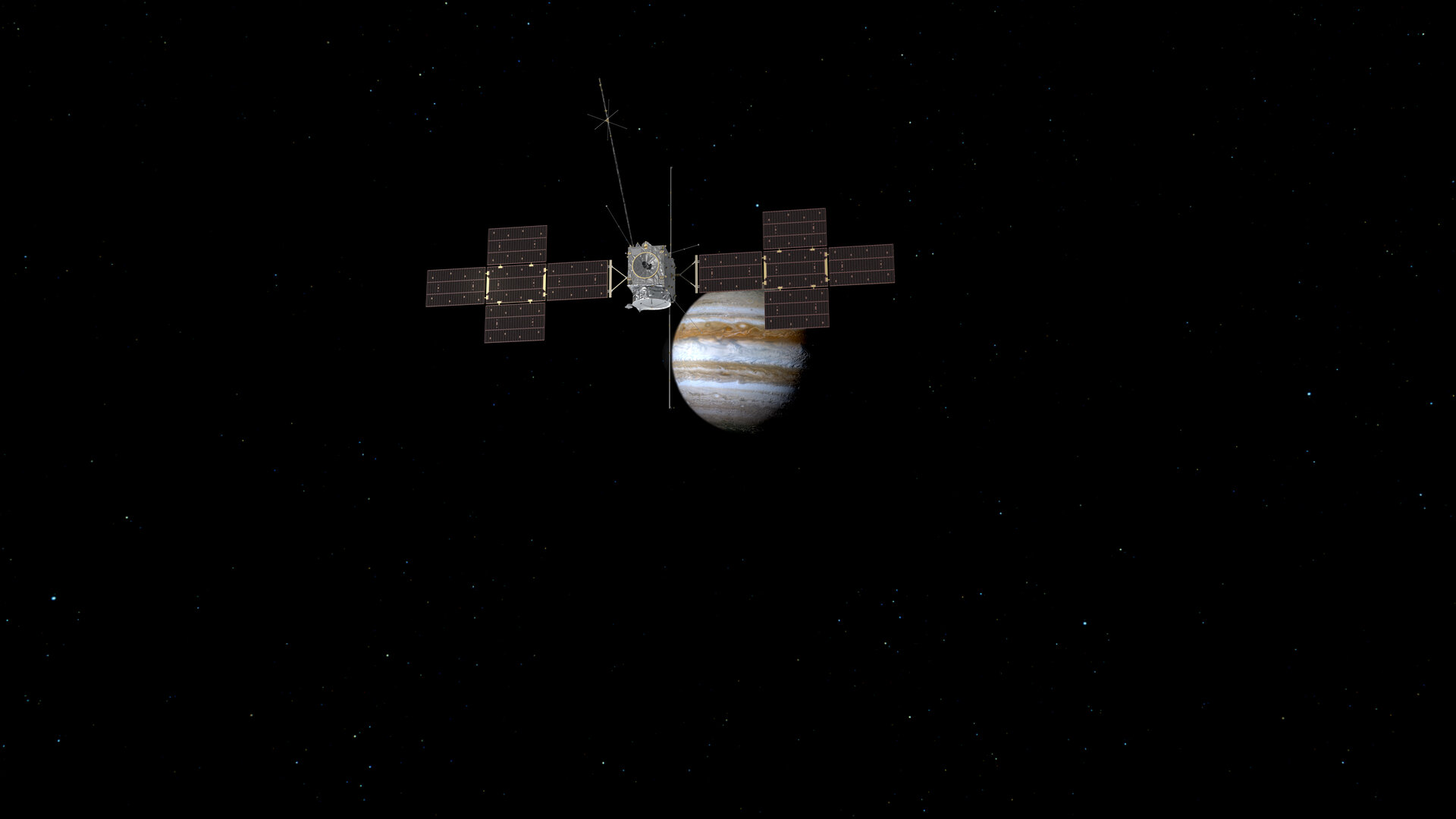Jupiter's secrets: Top five mysteries Juice will solve
Jupiter, its magnetic environment, and its moons form one of the most intriguing systems in the Solar System. ESA’s Jupiter Icy Moons Explorer (Juice), which launched on 14 April 2023 and will arrive at Jupiter in 2031, will reveal more about this fascinating planet and its natural satellites.
The mission will investigate five areas of priority, from Jupiter’s turbulent atmosphere to the putative liquid oceans on three of its planet-sized moons: Ganymede, Europa and Callisto.
Juice will address two core themes of ESA’s Cosmic Vision programme: How does the Solar System work? and What are the conditions for planet formation and the emergence of life?
So – what mysteries will Juice solve?
1. What are Jupiter’s ocean worlds like...?
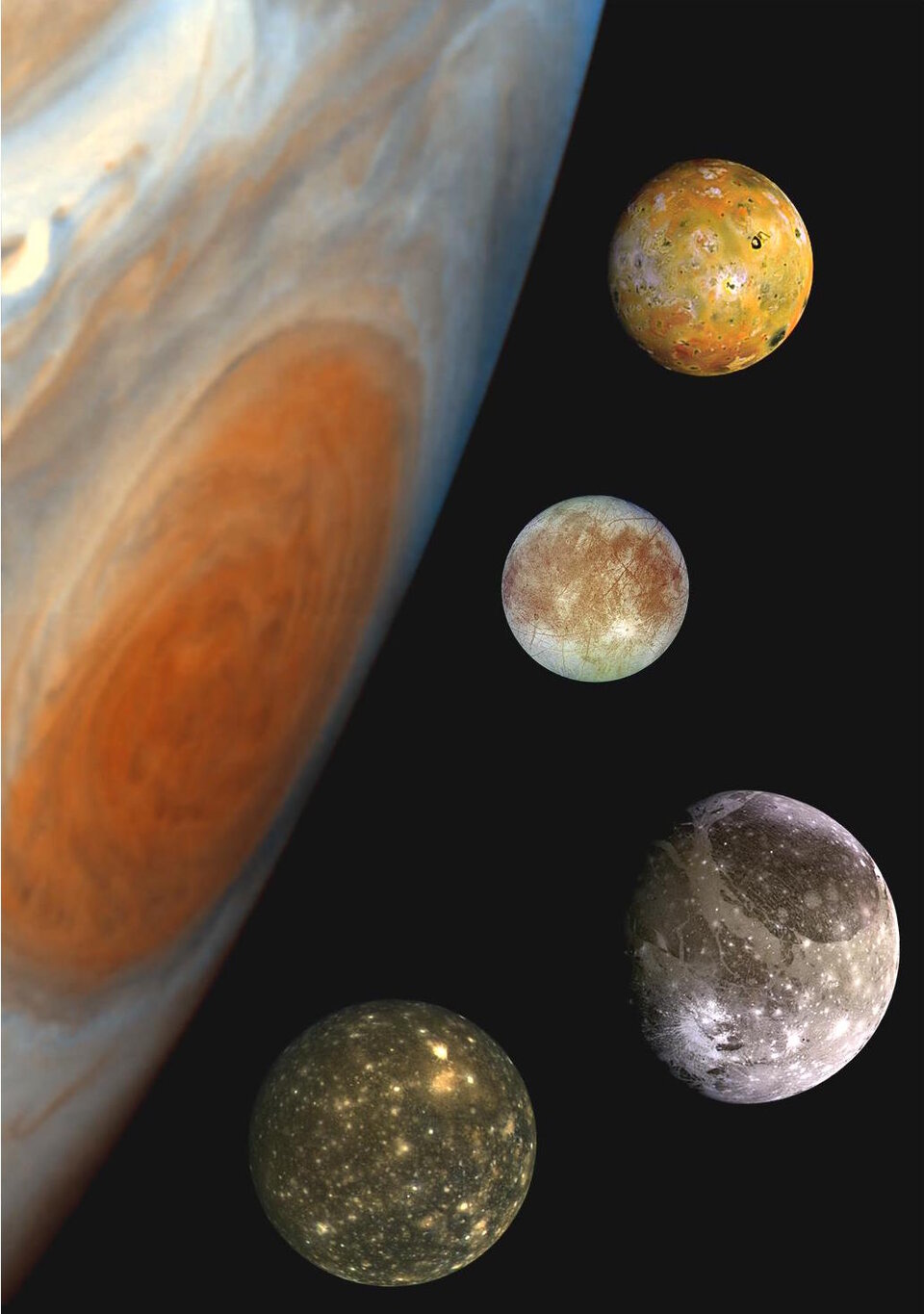
The four largest of Jupiter’s moons are known as the ‘Galilean moons’; of these, three are thought to have oceans of liquid water hidden beneath their icy crusts (Ganymede, Europa and Callisto – excluding Io, which is not known to be a water world). How far below the surface do these oceans start, and how deep are they? Do they contain salty or fresh water – and if so, how much of each?
Juice will study these three water worlds – Ganymede, Europa and Callisto – to probe their hidden ocean layers and icy crusts, understand the conditions that shape their surfaces and their tiny atmospheres, and reveal how what we see above connects to the substantial internal oceans thought to lurk below. Together, these moons could hold a colossal amount of water – as much as six times the water contained in Earth’s oceans.
The surfaces of all three moons are different, displaying a mix of old, dark, heavily pitted regions and paler, younger, more lightly grooved terrains. There is evidence for geological activity, either past or present, on some of these moons. Juice will explore current levels of activity and probe how active the moons may have been in the past, painting a detailed picture of this dynamic trio – including how their mass is distributed internally, how their interiors have evolved over time, and whether they have experienced tectonics or icy volcanism.
LINK: Read more about Juice’s exploration of Jupiter’s icy moons
2. …and why is Ganymede so unique?

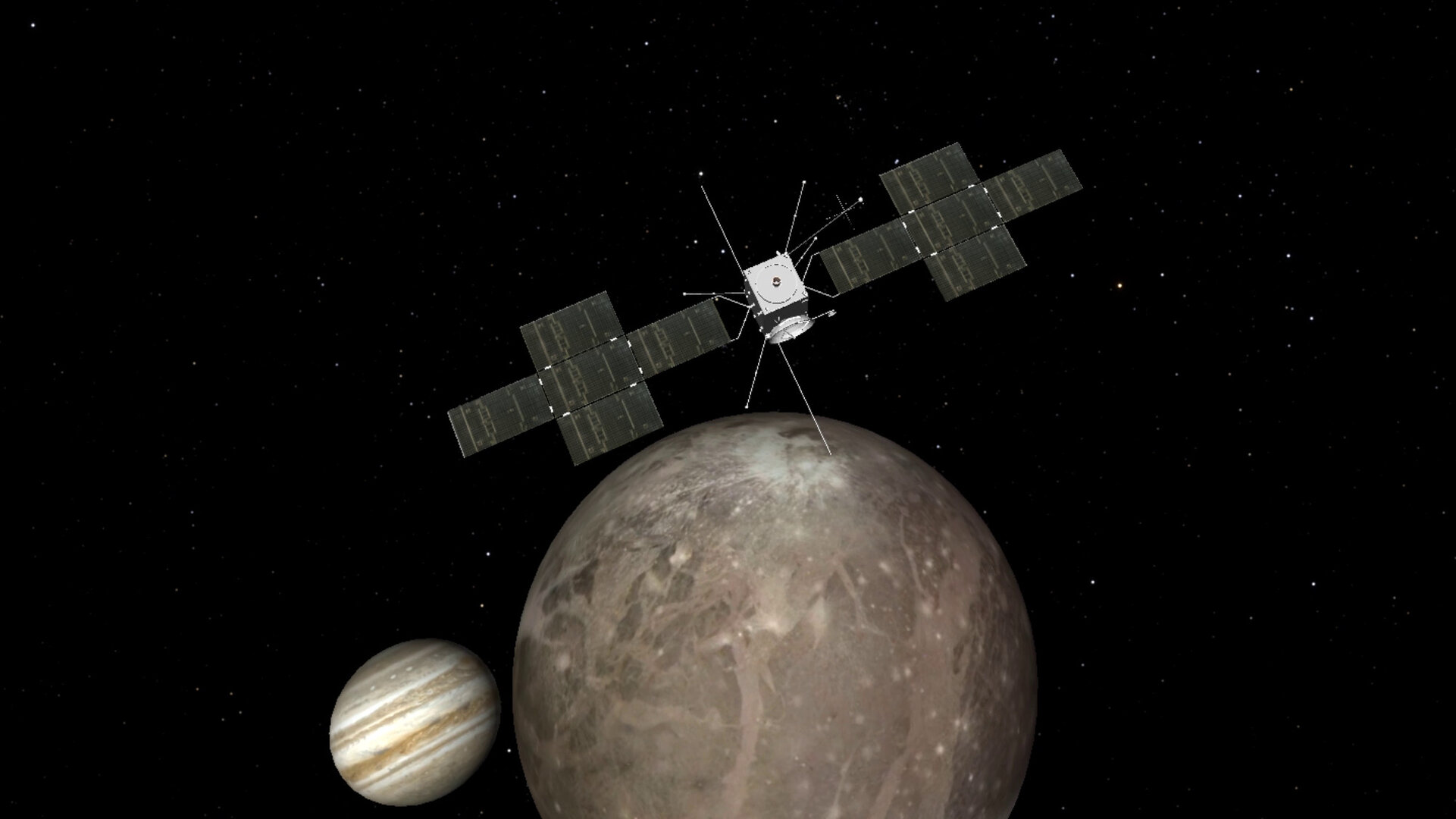
Access the video
Of the three moons, Juice’s primary scientific target will be Ganymede, the largest moon in the Solar System – larger than Pluto and Mercury – and the only one to have an intrinsic magnetic field. Only two other solid bodies in the Solar System generate dipole fields like Ganymede – and both are planets (Mercury and Earth), one of which hosts life.
Ganymede offers an ideal natural laboratory for studying the nature and properties of icy worlds. Juice will focus on characterising this moon, while also producing a comparative study of Jupiter’s three water worlds through its observations of Europa and Callisto. The spacecraft will become the first ever orbiter of an ocean world, and will use its suite of ten sophisticated instruments to measure how Ganymede rotates, its gravity, its shape and interior structure, its magnetic field, its composition, and to penetrate its icy crust using radar down to a depth of about nine km.
Juice will also investigate the water vapour and other substances in Ganymede’s atmosphere to fully understand the processes taking place in the moon’s space environment. This includes exploring how particles from Ganymede fill the outer layers of the moon’s thin atmosphere – made of hot, ionised matter (plasma) – and understanding how the environment of the moon interacts with the magnetic field, plasma populations and radiation belts of Jupiter.
3. Could there be – or ever have been – life in the Jupiter system?
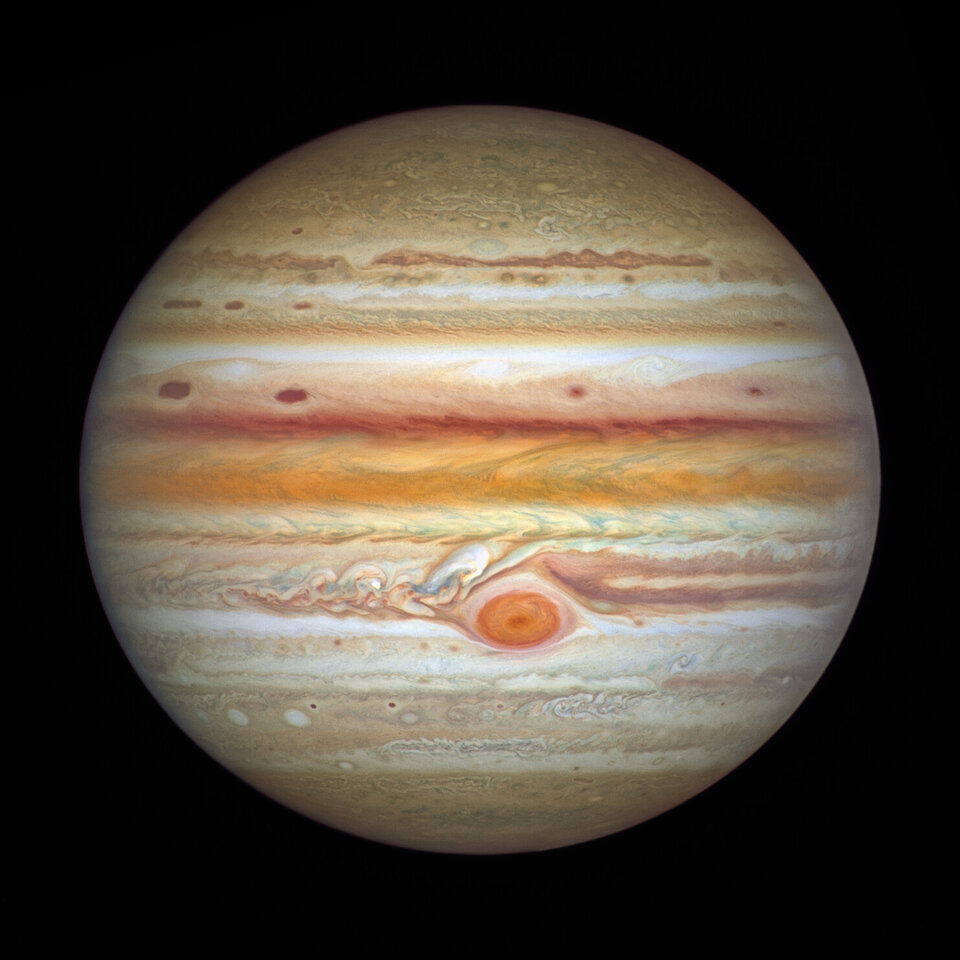
Determining whether the Jovian moons provide the right conditions for habitability is one of Juice’s core objectives. Could life have appeared somewhere there? Do any of the Galilean moons have the building blocks needed for life?
By studying the Galilean moons’ hidden oceans, magnetism, heating processes, tidal effects, orbits, surface activity, cores and compositions, atmospheres and space environments, Juice will investigate whether the conditions necessary for life could ever have emerged on Ganymede, Europa or Callisto. Juice will help us to understand these worlds not only as planetary bodies but also as possible habitats for life. Juice’s high-resolution mapping will hunt for biologically essential and important elements (such as carbon, oxygen, nitrogen, magnesium and iron).
These moons are especially exciting prospects for life given their hidden subsurface oceans. Characterising their habitability will have far-reaching scientific implications well beyond the Jupiter system itself, and will help us understand the general habitability of icy worlds across the Universe. Importantly, Juice’s second target of the wider Jupiter system will reveal more about the general prospects for habitability in similar planetary systems around other stars.
4. How has Jupiter’s complex environment shaped its moons, and vice versa?

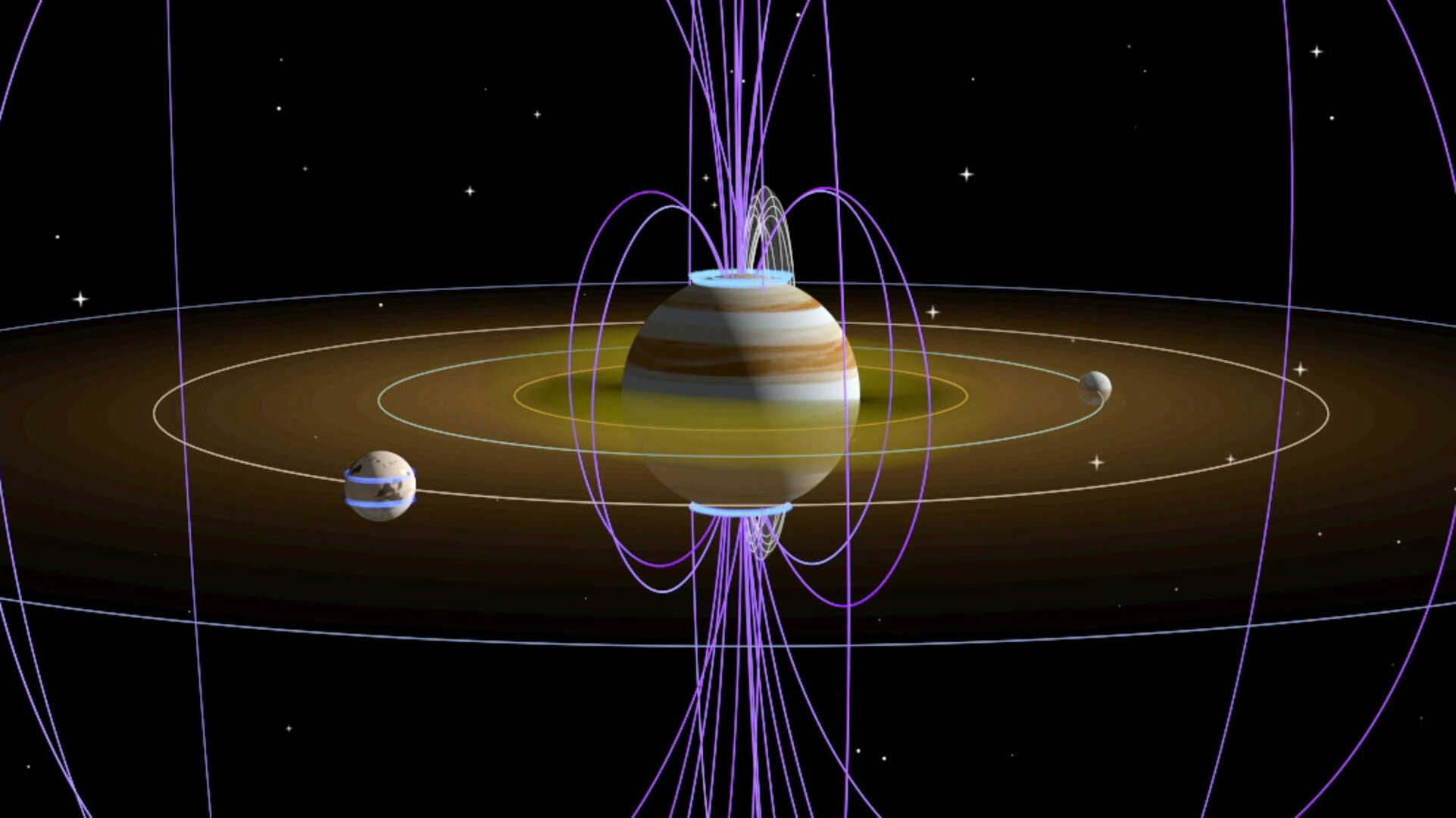
Access the video
Jupiter has a powerful and unique gravity, magnetic and plasma environment. Notably, Jupiter’s magnetic field is some 20 times stronger than Earth’s; understanding the planet’s complex magnetic environment remains one of the Solar System’s outstanding mysteries, and one Juice aims to solve. Primarily: how has this harsh environment shaped conditions on the Galilean moons, and how do Jupiter and its moons interact?
Jupiter’s large moons orbit within this intense magnetic and radiation environment, giving rise to unique interactions between the moons and their surroundings.
Key processes include the generation of high-temperature plasmas and energetic particles; the rapid acceleration of these particles throughout the system by Jupiter’s fast-rotating magnetic field; the creation of auroras, hot spots, belts of intense radiation and triggering of radio emissions; and couplings between Jupiter’s magnetic field and environment with the ‘solar wind’ of charged particles emitted by the Sun. Plasma is funnelled towards Ganymede and Europa, where it stays and affects the moons’ surface compositions – but the nature of these interactions, and their consequences for habitability, remain a mystery.
Beyond magnetism and radiation, Juice will investigate Jupiter’s complex gravitational environment; how the moons interact tidally with both one another and their parent planet; and the relationships and between the moons’ orbital dynamics (known as the 1:2:4 Laplace resonance, whereby for every orbit completed by Ganymede, Europa completes two and Io four).
Overall, Juice will explore how different aspects of Jupiter’s environment couple together. As well as revealing more about the Solar System, our improved knowledge of Jupiter – how particles are accelerated, for instance, and the mechanisms behind other physical processes we see – will enable us to better understand other planetary systems and objects in the Universe.
5. What is a typical gas giant planet like – how did it form, and how does it work?

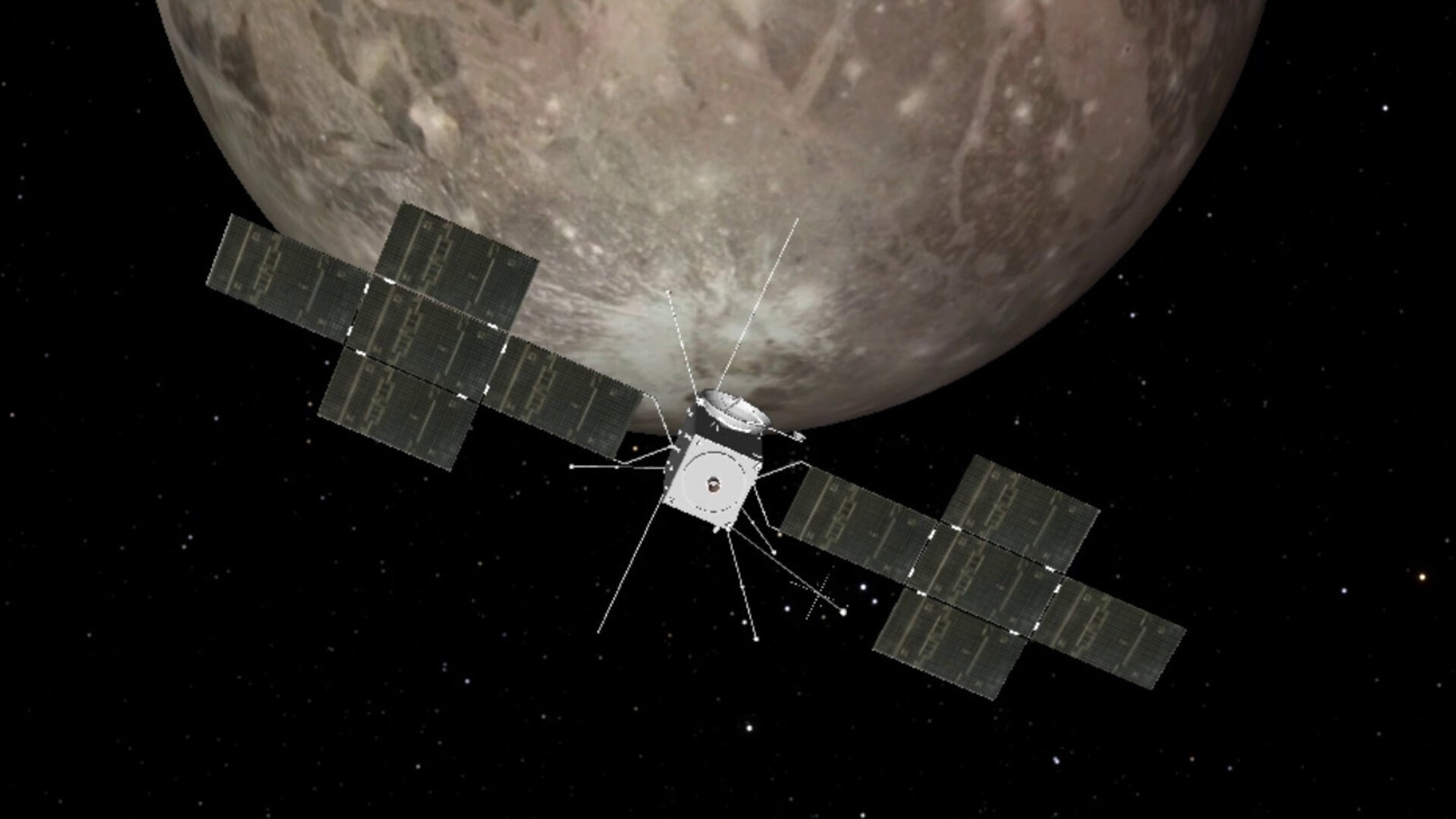
Access the video
The Jupiter system is an archetype for not only the gas giants of the Solar System, but also the many giant planets now known to orbit stars other than our own.
One of Juice’s primary aims is to understand how gas giant planets, and their moons, form and evolve. Understanding the origin, history and evolution of Jupiter and its moons will provide much-needed insight into how such a planetary system and its constituents formed and evolved over time, as well as revealing how possibly habitable environments can arise in Jupiter-like systems around other stars. Overall, Juice will enable a full characterisation of Jupiter as both a planet and system. It will explore how planetary systems like Jupiter’s work – in the Solar System and beyond.
For instance, what processes drive Jupiter’s weather, chemistry and climate, and how does this change over time on a typical giant planet? From its orbital vantage point, Juice will probe Jupiter’s ever-changing atmosphere over various timescales to reveal the processes that create and shape it.
The spacecraft will explore Jupiter’s atmosphere from its lower layers (those that host weather and give the planet its distinctive ‘banded’ appearance) up through the middle and upper layers, which are influenced by solar heating and chemistry. Juice will reveal how these different layers are connected and composed; how waves, energy, material and winds move vertically and horizontally between these layers; how external factors (such as cometary and other small-body impacts) influence Jupiter’s atmosphere; and how different atmospheric processes connect.
Juice will also monitor the Jupiter system more widely, making the most of its long tour through this region of space. While not a primary focus, Juice will observe from a distance the fourth and innermost Galilean moon, Io – the most volcanically active object in the Solar System, with around 400 lava-releasing volcanoes – and the smaller inner moons of Jupiter (Metis, Adrastea, Amalthea and Thebe), which orbit within, and are thought to replenish, the planet’s dusty ring system.


Access the video














 Germany
Germany
 Austria
Austria
 Belgium
Belgium
 Denmark
Denmark
 Spain
Spain
 Estonia
Estonia
 Finland
Finland
 France
France
 Greece
Greece
 Hungary
Hungary
 Ireland
Ireland
 Italy
Italy
 Luxembourg
Luxembourg
 Norway
Norway
 The Netherlands
The Netherlands
 Poland
Poland
 Portugal
Portugal
 Czechia
Czechia
 Romania
Romania
 United Kingdom
United Kingdom
 Slovenia
Slovenia
 Sweden
Sweden
 Switzerland
Switzerland











